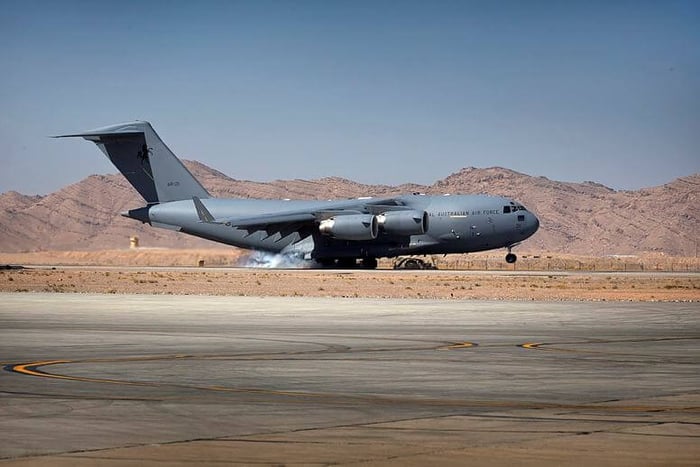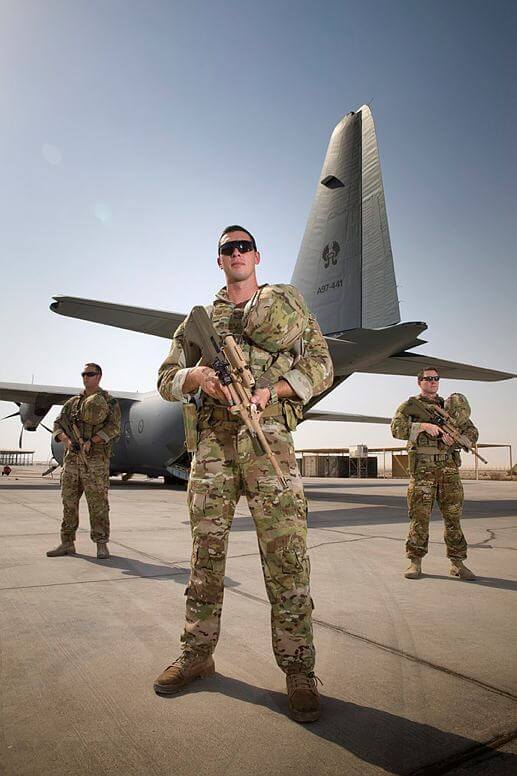
End of an Era in Southern Afghanistan
After nearly ten years of faithful and protective service, Camp Baker, Australia’s logistics and support base in Southern Afghanistan has closed. The closure of the compound, located within the sprawling Kandahar Airfield complex, follows the end of a five-year mission for the Australian-led 205th Corps Advisory Team (205 CAT), the final custodians of the camp.
The remaining 68 aircraft pallets, eight Bushmaster protected mobility vehicles, two Mack trucks, one 20-tonne trailer and 135 personnel were flown from Kandahar Airfield in October 2015 as part of the camp’s retrograde. Officer Commanding Force Support Element - Rotation Three, Captain Phillip Clague said the redeployment effort was a significant undertaking.
“The camp provided full operational support to the 205 CAT and Force Protection Element up until October 1st,” he said. “Preliminary work was undertaken in the weeks prior, however a significant portion of the retrograde activity occurred in the following three weeks, with the gates to Camp Baker locked for the very last time on October 22nd.
“The achievement is a credit to the level of effort and initiative by members of the Force Support Element and other key supporting elements within the camp.” Camp Baker was established in March 2006 to house the Aviation Support Element, consisting of a detachment of two CH-47D Chinook helicopters from C Squadron, 5th Aviation Regiment.
The Aviation Support Element, designated Task Group 637.3, was embedded within NATO Regional Command - South to supplement aviation support to coalition forces in the region, including Australian special forces units operating in Uruzgan Province.
Colonel Brett Greenland led a small team from 16th Aviation Brigade, 5th Aviation Regiment and 19 Chief Engineer (19 CE) Works who provided a reconnaissance of the site in January 2006. He said construction was on a very tight schedule. “Camp Baker was created from a green-field site in less than two months, on a limited budget, and during the physically demanding conditions of an Afghan winter,” he said.
“However, the insights of Colonel Jeremy King - who was then Major - and the 19 CE Works team allowed the future expansion of the camp in a very efficient manner.”
In its ten-year history, Camp Baker was also home to the Royal Australian Air Force Heron Unmanned Aerial Vehicle detachment and the Mobile Control and Reporting Unit. Elements of the Special Operations Task Group and medical staff embedded within the Kandahar surgical hospital also called Camp Baker home.
It was a sanctuary for other government agency personnel working within Headquarters Regional Command - South. The Camp was named Camp Baker by Lieutenant Colonel Kevin Humphreys, the first Commanding Officer of the Task Group 637.3 (Aviation Support Element), after Corporal Mick Baker who was tragically killed in the Blackhawk mid air collision at the High Range Training Area, near Townsville in 1996.
Six Australian personnel remain at Kandahar Airfield, embedded in the NATO Resolute Support, Train Advise Assist Command - South (TAAC-S). They will continue to provide advice and assist touchpoint with Afghan National Army’s 205th Corps until the end of the TAAC-S mission.













